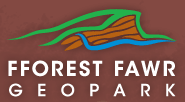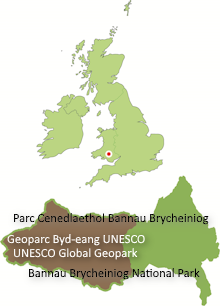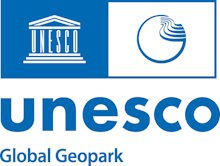Seven thousand years of human history.
The first evidence of man’s occupation of Fforest Fawr comes from the Stone Age. Over the succeeding millennia he was to bring about great changes to this landscape – sometimes working with nature, sometimes seeming to struggle against it.
The uplands of Fforest Fawr preserve a wealth of sites from the Bronze Age and from the Iron Age which followed it. The remains which are found scattered across the hills reflect man’s intimate knowledge of this land and his dependence upon what it could offer him. It is the native stone monuments which have fared best over the centuries though peat can occasionally preserve more delicate objects.
The Romans left their mark here as elsewhere – some of their forts are still visible but their roads have largely been abandoned. There is of course a distinct Celtic thread which runs through much of the area’s history. This is manifest as much in the names which adorn the Geopark as in anything more substantial.
The Norman period and the Middle Ages which followed saw continued change though the greatest changes came about with the development of modern industry. South Wales was one of the birthplaces of the Industrial Revolution which Britain then exported to the world. Quarries, tramways, railways and factories began to multiply across this land.
Most now lie abandoned as history has moved on and this legacy from the 18th and 19th centuries provides the modern visitor with an extraordinary insight into the past. The interest of Fforest Fawr UNESCO Global Geopark lies as much in man’s interaction with it as in its purely natural aspects. Take a look at the Timeline to discover who did what and when.
Take a look at the Geopark through the ages – you’ll come away with a deeper appreciation of it.
Further information
There are three archaeological trusts covering parts of Fforest Fawr UNESCO Global Geopark whose websites provide useful additional information on the archaeology of the Geopark.
- Dyfed Archaeological Trust covers the Carmarthenshire section
- Clwyd-Powys Archaeological Trust covers the Powys section.
- Glamorgan-Gwent Archaeological Trust covers the area to the south of Powys, comprising the former county of Glamorgan.
A hugely useful resource is the Coflein site provided by the Royal Commission on the Ancient & Historical Monuments of Wales (RCAHMW). You will find information here on virtually every historic site in the Geopark and indeed the rest of Wales.



